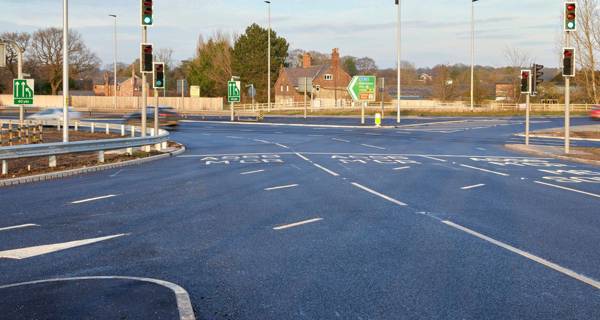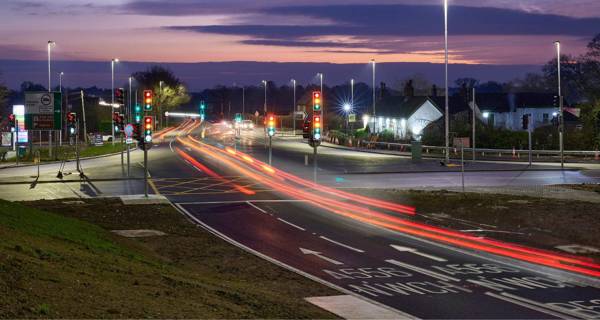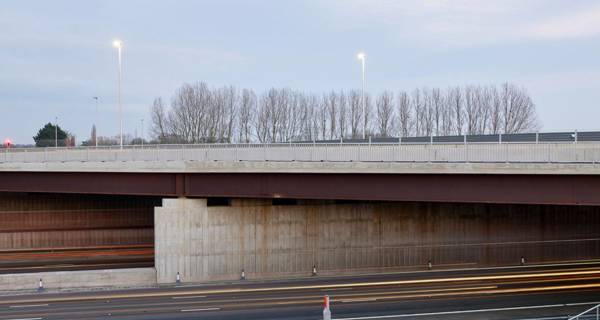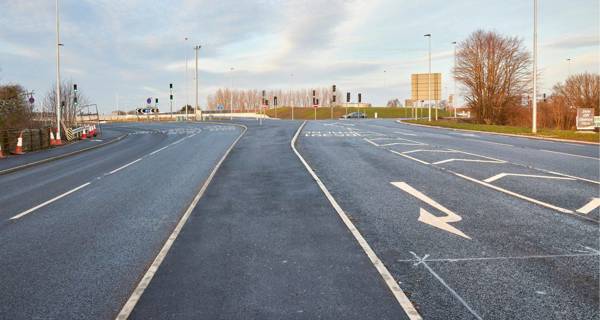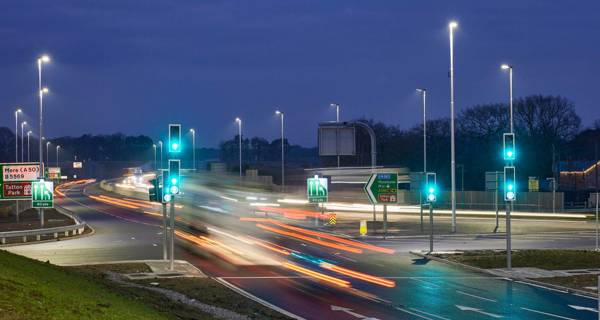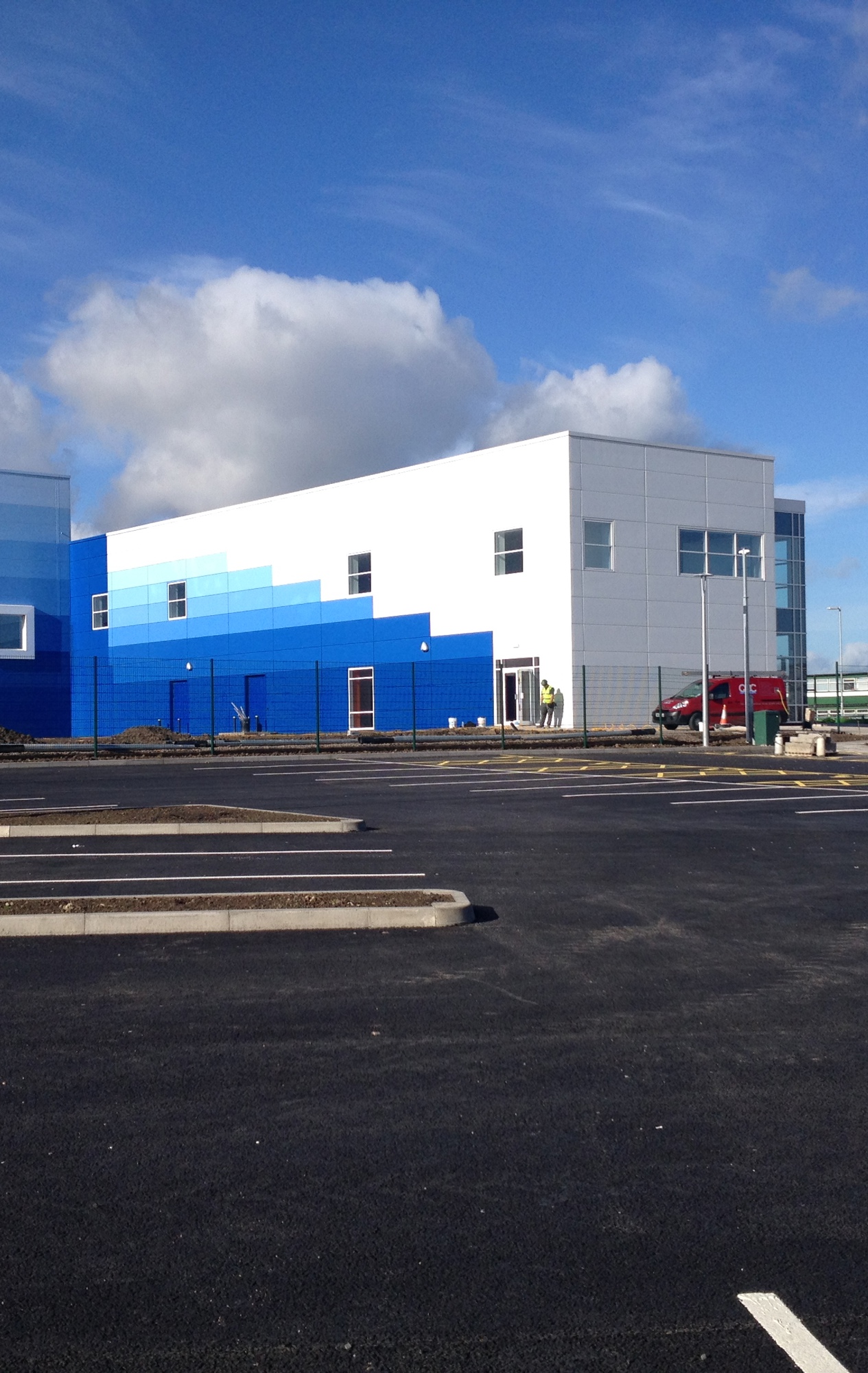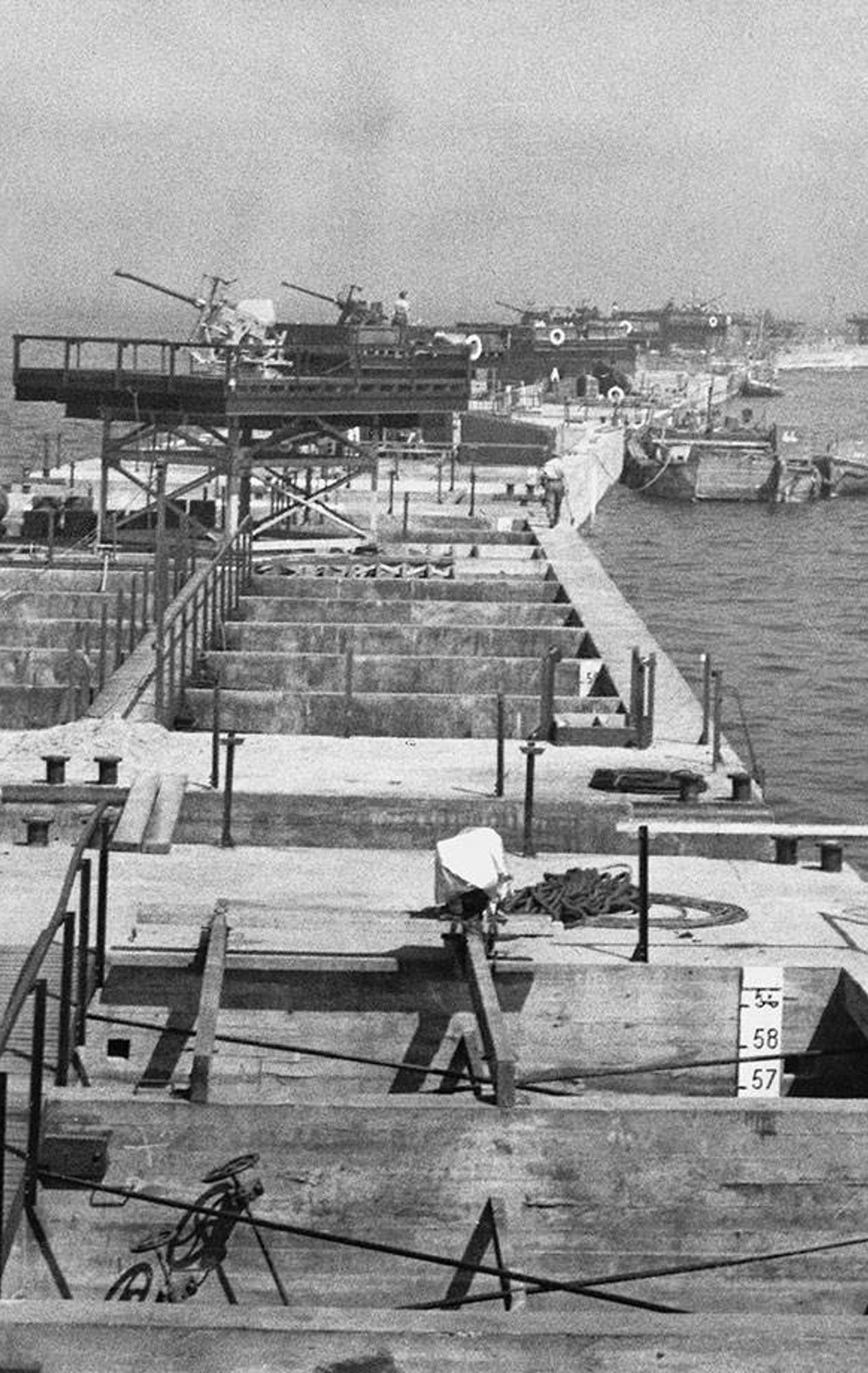- Client: National Highways
- Sector: Infrastructure
- Value: £43m
- Region: North West
- Completion Date: 2021
M6 Junction 19 improvement scheme
Innovative design and engineering excellence delivered a first-of-its-kind ‘throughabout’ overbridge at M6 Junction 19 near Manchester.
Our highly collaborative £43m joint venture with Amey has significantly improved connectivity between the M6 and A556 in Knutsford, near Manchester.
Junction 19 of the M6 is a critical link between Cheshire and Greater Manchester, accommodating 65,000 vehicles a day. But with traffic congestion already a concern, and with numbers expected to rise to 88,000 vehicles a day by 2036 due to the expansion of Airport City Manchester the development of Wythenshawe MediPark, failure to upgrade the junction threatened gridlock.
So, National Highways sought a partner to manage improvements while staying within the existing footprint. AmeySRM, our joint venture with Amey, provided the ideal blend of design and construction expertise, delivering the improvements in November 2021, having successfully managed works through the COVID-19 pandemic.
Project summary
Setting new industry standards with our pioneering overbridge design
M6 Junction 19 is situated on a key strategic route, identified as a significant priority by National Highways. Without improvements to absorb increasing traffic, the junction threatened to bring South Manchester to a standstill. However, any new development needed to remain within the existing junction footprint.
The resulting design accommodates two new link roads, mimicking newer ‘through-about’ designs, but this time at an elevated level - the first of its kind on the UK Strategic Road Network.
The bridge design was developed by applying AmeySRM expertise and innovation to evolve the PCF3 concept design, overcoming complex highway geometry challenges like M6 clearance and gyratory tie-in while optimising a demanding programme and applying value engineering to create maximum project value.
This solution showcases what can be achieved when we apply innovation to challenge design standards and provides a benchmark for future junction designs of this nature.
Creating a collaborative culture to secure client trust and key stakeholder engagement
Amey and Sir Robert McAlpine have a strong track record of working together over the last 23 years and were part of the first delivery integration team to jointly enter a Collaboration Charter with the whole supply chain to deliver value to clients and customers.
Throughout the project we worked closely with National Highways to align with their aims to drive value engineering, and to realise health and safety, environmental, operational and cost benefits, coming a close second for CIHT 2021 Team of the Year, illustrating how we were able to understand the client’s values and how our ways of working complemented these effectively.
The collaborative culture of the AmeySRM integrated project team (IPT) also fostered greater innovation and efficiency. Through collaboration and integrated working, we solved numerous technical challenges and drove innovation into our solutions. Behaviours and ways of working together improved the design solution and therefore the overall performance of the project – critical, considering we delivered the entire construction phase during a pandemic.
This collaborative culture also helped secure early engagement with key stakeholders such as the SES (Safety, Engineering and Standards) team at National Highways, an approval authority custodian of Highway Standards, and WSP, technical advisors to National Highways. Having these key stakeholders integrated into the team meant we could find and approve innovative solutions to technical problems more quickly.
Councillor Craig Browne, deputy leader of Cheshire East Council and chair of its highways and transport committee noted:
“The whole project team are to be congratulated on delivering this important and complex scheme under the twin pressures of poor weather and Covid working restrictions, while keeping travel disruption to a minimum”.
Going above and beyond – providing more than just increased capacity
The M6 Junction 19 improvement scheme’s innovative design and successful construction have increased the motorway’s capacity while enhancing connectivity between the M6 and A556 through advanced link roads. However, the completed Junction 19 boasts extensive benefits beyond its primary arterial enhancements. By alleviating congestion on the M6, it’s notably bolstered network safety and improved air quality. Users now enjoy faster, more dependable journeys, boosting overall satisfaction and enabling economic growth through expanded junction capacity and reliable travel times.
Moreover, the comprehensive project has showcased the benefits of seamless collaboration and addressing a complex junction with innovative design. It’s a catalyst for regional economic growth, complementing other enhancements to Manchester’s southern access, such as improvements to the A556 and ongoing smart motorway projects. The project has also invested £9.4m in local businesses and prioritised local pedestrian and cyclist access by widening footways, installing crossings, and renewing traffic signals and road signs, promoting safety, and facilitating smoother navigation.
The work that we’ve done will provide long-lasting benefits for the local community, as well as the tens of thousands of people who pass through the junction each day. We’ve already received messages of thanks from motorists and residents who are using the junction and enjoying the improved connections it offers.
Pat Cumming Senior Project Manager
Enhancing the local environment and nearby communities
As well as improving air quality and boosting the local economy, the project also provided several other sustainability and social value benefits.
As the bridge is set within the existing footprint of the roundabout, we’ve reduced land take. Life-cycle analysis resulted in the specification of weathering steel girders and stainless-steel bearings, doubling their lifespan and negating future repainting activities. We planted native grassland, trees and shrubs with the SuDS Pond installation to remove pollutants from surface water runoff and to provide ecological potential. And we disposed of waste in accordance with the waste hierarchy, including reusing/recycling cat’s eyes where possible, and reusing waste material as recycled aggregate.
The project team engaged in several environmental awareness initiatives. To celebrate World Environment Day, we planted flowers in repurposed tyres around the site. To mark Cycle to Work Day, workforce members ditched their cars and rode their bikes to work – promoting the improvements we made for local cyclists as part of the works, including creating better local links, safer crossings and an improved route across the roundabout. We also took the opportunity to tidy up the cycle path outside the site compound by holding litter picks under the tunnel and along the old A556 and A5033.
Social value and community benefits include:
- Supporting, developing and inspiring apprentices with 285 apprentice work days on the project, and creating a short behind-the-scenes film providing insight into what it’s like to be an apprentice.
- Providing 56 hours of volunteering to local community initiatives such as the Children’s Adventure Farm Trust.
- Raising approx. £7,000 for a local community club, Knutsford Scouts Hut and Macmillan Cancer Trust.
- Building a disabled ramp for the local St Paul’s church.
- Undertaking STEM activities in local schools and involving children in a drawing competition of the new bridge.
Connecting the country: North West region
Infrastructure projects
-
![The AkzoNobel facility Filling Hall]() Read more about
Read more aboutAkzoNobel Paint Manufacturing Facility: A high-tech, sustainable production hub
The AkzoNobel Paint Manufacturing Facility in Ashington is a 16,500m² high-tech production plant designed for efficiency and sustainability. Incorporating advanced process integration, 3D BIM coordination, and renewable energy solutions, the facility set new benchmarks for industrial manufacturing.
Sectors: IndustrialRegion: North East -
![McAlpine workers constructing one of the caissons]() Read more about
Read more aboutConstruction of Mulberry Harbours to support the D-Day landings
A military engineering project of unprecedented size and complexity, we played a significant role in the construction of two artificial port facilities to support the allied forces following the D-Day landings in Normandy.
Sectors: Infrastructure -
![Newcastle Airport Aerial]() Read more about
Read more aboutOnward and upward for Newcastle International Airport
Over the last 40 years, we’ve helped Newcastle International Airport expand to meet growing demand.
Sectors: InfrastructureRegion: North East
- Tags
- Infrastructure
- M6
- "M6 J19"
